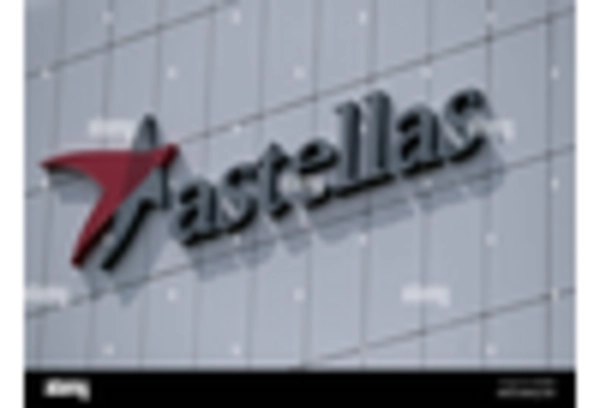Rising Healthcare Expenditure
The benign prostatic hyperplasia-treatment market is benefiting from the rising healthcare expenditure in the GCC countries. Governments and private sectors are increasingly investing in healthcare infrastructure, which includes the development of specialized urology centers and the availability of advanced treatment options. According to recent reports, healthcare spending in the GCC is projected to reach $104 billion by 2025, indicating a robust commitment to improving health services. This increase in funding is likely to enhance access to BPH treatments, thereby expanding the market. Additionally, the growing trend of health insurance coverage for BPH treatments is expected to further stimulate demand, as more patients can afford necessary interventions.
Advancements in Treatment Technologies
Technological advancements in the benign prostatic hyperplasia-treatment market are playing a crucial role in shaping the industry landscape. Innovations such as laser therapies, minimally invasive surgical techniques, and new pharmacological agents are enhancing treatment efficacy and patient outcomes. For instance, the introduction of new medications that target specific pathways in prostate enlargement has shown promising results in clinical trials. These advancements not only improve the quality of life for patients but also attract healthcare providers to adopt these modern treatment modalities. As a result, the market is likely to witness increased investment in research and development, further propelling growth in the GCC region.
Growing Awareness and Education Initiatives
Awareness and education initiatives regarding benign prostatic hyperplasia are significantly impacting the treatment market. Various health organizations and medical societies in the GCC are actively promoting awareness campaigns to educate the public about BPH symptoms, risks, and available treatment options. These initiatives aim to reduce stigma and encourage men to seek medical advice, which is crucial for early diagnosis and treatment. As awareness increases, more patients are likely to consult healthcare professionals, leading to higher treatment rates. This trend is expected to drive the benign prostatic hyperplasia-treatment market, as a more informed patient population seeks effective solutions for their condition.
Regulatory Support for Innovative Treatments
Regulatory support for innovative treatments is emerging as a key driver in the benign prostatic hyperplasia-treatment market. Regulatory bodies in the GCC are increasingly streamlining the approval processes for new therapies, which encourages pharmaceutical companies to invest in research and development. This supportive regulatory environment is likely to facilitate the introduction of novel treatment options, including biologics and advanced surgical techniques. As new therapies gain approval, healthcare providers will have access to a broader range of effective treatments, potentially improving patient outcomes. Consequently, this trend may lead to a more competitive market landscape, fostering innovation and growth in the benign prostatic hyperplasia-treatment market.
Increasing Prevalence of Benign Prostatic Hyperplasia
The benign prostatic hyperplasia-treatment market is experiencing growth due to the rising prevalence of benign prostatic hyperplasia (BPH) among the aging male population in the GCC region. Studies indicate that approximately 50% of men aged 50 and older are affected by BPH, with the incidence increasing with age. This demographic trend suggests a growing patient base requiring treatment options. As the population ages, healthcare providers are likely to see a surge in demand for effective therapies, thereby driving market expansion. Furthermore, the increasing awareness of BPH symptoms and treatment options among patients is expected to contribute to market growth, as more individuals seek medical intervention for their condition.

















Leave a Comment